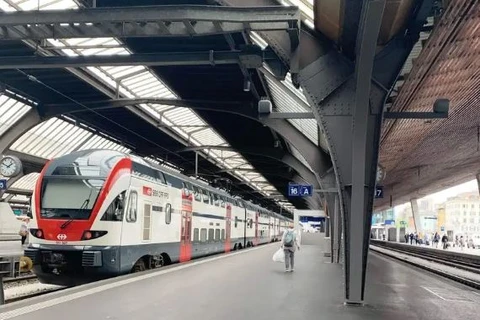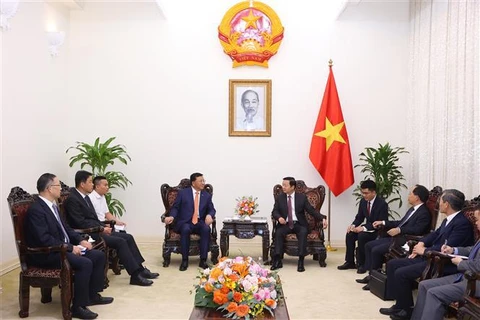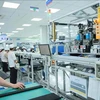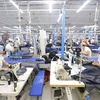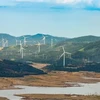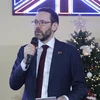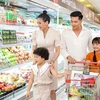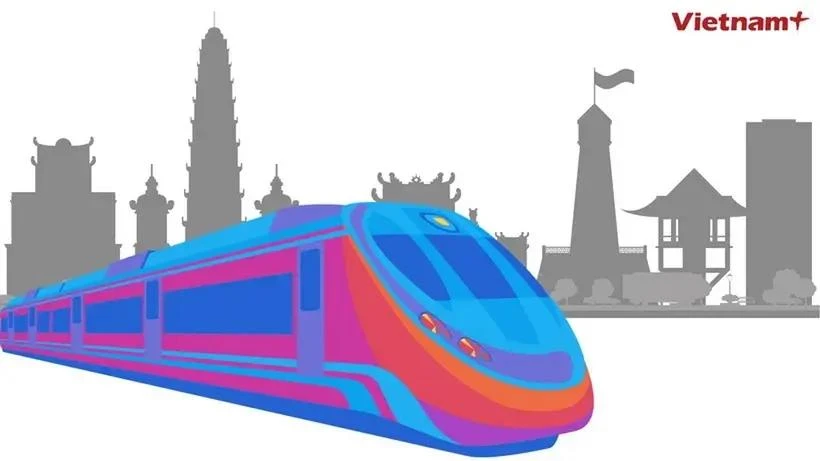
HCM City (VNA) – Lam Viet Tung, Chairman of the Vietnam Intellectuals Association in the Netherlands, has expressed his support for the proposed project on developing a North-South high-speed railway in Vietnam.
Tung, who is also an information technology and telecommunications consultant, said he learned that on September 18, 2024, the Politburo gave opinions on the investment project on the North-South high-speed railway. It aims to promote the national economy; connect regions; create a premise and driving force for the development of the railway industry and supporting industries; develop sustainable, modern, and friendly modes of transport to reduce traffic accidents, environmental pollution, respond to climate change and contribute to ensuring national defence and security.
However, accessing the project’s pre-feasibility study report released by the Ministry of Transport in November 2023, he found that the ministry chose the option to develop a high-speed railway line with a design speed of 350 km per hour, a length of about 1,500 km, serving both passengers and goods when needed. However, the report did not include the clear goal as directed by the Politburo nor detailed requirements for the project.
There was no overall architecture of the national transport network, of which, the railway is the backbone connecting with other means of transport, connecting with ports, airports, or neighbouring countries, he pointed out.
Without the objectives, detailed requirements, overall architecture and preliminary bidding results, it is impossible to have a relative conclusion about the project's budget. So the estimated cost of 67 billion USD (about 44 million USD per km) given by the ministry is very difficult to convince, Lam said.
He said that China implements projects in a shorter time with lower costs, only from 17 - 21 million USD per km. In Europe, in recent years, the average construction cost per km of high-speed rail is about 20 - 30 million Euros. In France, the construction cost has been reduced to 10 million Euros per km, by accepting the changes of height in accordance with the terrain, instead of leveling a lot or building tunnels and viaducts.
The MoT proposed a maximum speed of 350 km per hour for the line which will only carry passengers and kept the current outdated system for transporting goods. Thus, operating two systems at the same time is a waste of land and does not follow the target set by the Politburo.
If the line only carry passengers, it will be a waste because Vietnam already has many inter-provincial airports and is completing its highway system. The train ticket price will increase to almost the same as that of an airline ticket, making it difficult to attract people to use and the ability to recover capital will be very difficult, leaving a burden for the next generation.
To promote the effectiveness of the project, Tung said that the MoT needs to clarify the goals of serving the economy and national defence; develop a project in the direction of transporting both passengers and goods; study the possibility of not using the current system to reduce operating costs and build new the railway on the old one to save land and reduce the impact on people's lives.
With the goal to boost economic development, the project should start from a place with high demand to transport goods, for example from the Southwestern region to Ho Chi Minh City to seaports, consumer markets, serving import and export of goods, contributing to reducing transport costs and pressure on roads by 50% and being good for the environment.
The national transport network is the lifeblood of the economy, so it is necessary to have an overall planning of the national transport network; in which, high-speed railway is the backbone, clearly indicating connections with other means of transport such as buses, metro, airplanes and ships. Meanwhile, stations need to be built in the city centre to optimise the movement of people and businesses, and easily connect with other means of transport.
Specifically, the line should have stations connecting to Long Thanh or Noi Bai airports.
Tung also analysed that choosing a railway with a maximum speed of 250 km per hour is suitable for transporting goods and passengers, with little impact on the environment. In addition, this speed allows the use of locomotives and equipment meeting European EN standards, which helps Vietnam not depend on a manufacturer and makes it easy to connect and control.
With the above speed, it is possible to use Electric Multiple Unit (EMU) with a wireless charging system, taking electricity from the rails, not polluting the environment due to metal dust falling due to friction between the power arm and the wire, saving electricity and not needing to build a grid of electric poles next to the railway. Thus, the project's costs will be reduced and capital recovery will be quick, suitable for Vietnam's economic situation. However, if choosing EMU with a design speed of 250km per hour, when Vietnam wants to switch to the maglev train, the railway system will not be synchronized and will have to invest again.
If Vietnam keeps preferring the line with a design speed of 350 km per hour, Tung recommended to use maglev trains because that is the world trend with the ability to travel at very high speeds, larger cabin, less energy consumption and less noise.
Such recommended system can operate at speeds of up to 650 km per hour, which can help the express railway to compete with under-1,000-km-distance flights./.
